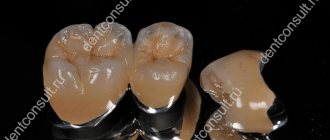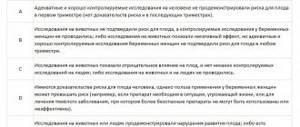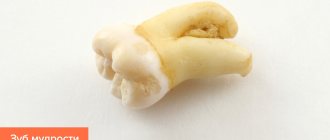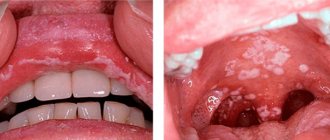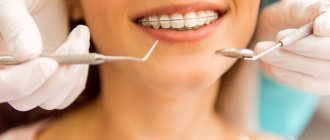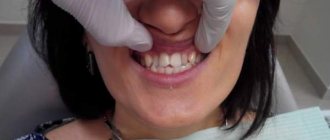From this article you will learn:
- What does Lincomycin help with?
- Lincomycin – price 2021,
- how to use Lincomycin in dentistry and for the treatment of purulent-inflammatory diseases.
Lincomycin is an antibiotic from the lincosamide group, which is quite outdated and does not have a wide spectrum of antimicrobial action. This medicine only works against certain types of microorganisms (pathogenic bacteria) and will therefore only be effective against certain types of infections. The only advantages of this antibiotic are its low price, as well as its effectiveness in resistant infections to penicillin antibiotics. The drug is strictly contraindicated for pregnant and lactating women.
The antibiotic Lincomycin was once widely used in dentistry, due to its relative affinity for bone tissue. However, it is unlikely that any dentist will now decide to prescribe lincomycin for implantation or in the treatment of periodontal diseases. The range of indications for the use of Lincomycin in dentistry is, as a rule, limited to its use after a complex tooth extraction, or for the treatment of inflammation during exacerbation of dental periodontitis or periostitis (flux).
Lincomycin: release forms
If anyone is interested, the chemical formula of lincomycin is as follows: (2S, 4R)-N-[(1R, 2R)-2-hydroxy-1-[(2R, 3R, 4S, 5R, 6R)-3, 4,5-trihydroxy-6-(methylsulfanyl)oxan-2-yl]propyl]-1-methyl-4-propylpyrrolidine-2-carboxamide. In this article we will talk about the optimal indications for the use of Lincomycin, and how to avoid the risk of developing complications that are almost traditional for lincosamide antibiotics, such as pseudomembranous colitis (manifested by diarrhea).
Lincomycin - price, release forms
The antibiotic lincomycin has 3 release forms (capsules, ampoules and ointment), but in any case, in pharmacies you will only find this drug from a Russian or Belarusian manufacturer. The cost of drugs is lower - indicated for 2021.
- Lincomycin capsules - each capsule contains 250 mg of the active substance “lincomycin hydrochloride”. For Lincomycin capsules, the price starts from 90 rubles (the package contains 2 blisters of 10 capsules each). If we take into account the standard regimen of use for an adult, 1 package is only enough for 3 days of use, which makes this drug even more expensive, for example, than the antibiotic Tsiprolet from the fluoroquinolone group.
- Lincomycin in ampoules - each package contains 10 ampoules of 1.0 ml. Each ampoule contains 300 mg of lincomycin hydrochloride, which in percentage terms is a 30% concentration. If we take into account the standard dosage regimen for adults, 1 package is enough for only 2.5 days of antibiotic therapy. The cost of 1 package will be from 110 rubles (at least 2 packages will be needed for a course of treatment).
- Lincomycin ointment 2% - intended for external use only, used for purulent inflammation of the skin. The ointment is available in tubes of 15 g, with an active substance concentration of 2%. The ointment is produced in Kurgan, and its cost will be from 100 rubles.
Lincomycin: drug analogues
A semisynthetic analogue of lincomycin is another antibiotic of the lincosamide group - the drug Clindamycin. It should be noted that this drug also has a fairly narrow spectrum of antimicrobial action, but its effectiveness against some types of microorganisms will be 2-10 times higher - compared to lincomycin. Another advantage of this drug is that its absorption in the intestine does not depend on food intake (lincomycin can only be taken on an empty stomach, 1 hour before meals).
The price of Clindamycin starts from 150 rubles (for a package of 16 capsules of 150 mg). Dosage regimen: 1 capsule 4 times a day, duration of administration is determined by the doctor. To summarize, the effectiveness of clindamycin will be only slightly higher, but taking the drug will be much more convenient. At the same time, the risk of developing pseudomembranous colitis when taking clindamycin will be slightly higher than when taking lincomycin (24stoma.ru).
The drug "Clindamycin"
This is a semi-synthetic analogue of Lincomycin. Clindamycin is the second representative of the lincosamide group. It is available in the form of capsules, granules for suspension and solution for injection. "Clindamycin" can be purchased under the following names: "Dalacin", "Klimitsin", "Clindafer", "Klinoxin". These are newer drugs from the lincosamide group, without some disadvantages:
- they are more active against bacteria;
- better and faster absorbed from the gastrointestinal tract;
- their effectiveness does not depend on food intake;
- They are active against protozoa, so they are often used in the treatment of chlamydia and other vaginal infections.
But Clindamycin often causes side effects such as pseudomebranous colitis. In addition, it costs much more - 130-150 rubles.
Lincomycin: indications for use
For the antibiotic Lincomycin, the instructions for use contain information that the drug tends to accumulate predominantly in bone tissue, joints, and bronchopulmonary secretions. Taking into account the supposed tropism of lincomycin to certain tissues, it is usually prescribed for the following diseases -
- purulent otitis media,
- tonsillitis, pharyngitis,
- lung abscess, pleurisy,
- infections of joints and bone tissue,
- purulent skin infections,
- with boils and carbuncles.
An important point - when taking lincomycin, you need to take into account that if you have previously taken antibiotics from the lincosamide group, the infection may no longer be sensitive to antibiotics from this group. This is due to the fact that staphylococci very quickly develop resistance to lincomycin and clindamycin. And in fact, it is now difficult to imagine, for example, an ENT doctor who would prescribe this rather outdated antibiotic to his patient.
It makes sense to prescribe lincomycin for these diseases only if you have had a microflora culture done, which showed the sensitivity of the infectious agents to this drug. In most cases, the prescription of antibiotics is carried out without studying the microflora, and therefore broad-spectrum antibiotics are prescribed (to which lincosamides do not belong).
Features of lincosamides
This group of antibiotics includes Lincomycin and Clindamycin, its semisynthetic analogue. They have a special mechanism of action on bacteria. In general, these are drugs that affect protein synthesis in the cells of microorganisms, which prevents their reproduction. This is the so-called bacteriostatic effect. But in high concentrations the drug “Lincomycin” has a bactericidal effect. Its analogues have the same properties.
They are effective against gram-positive cocci: streptococci, staphylococci, pneumococci. But gram-positive bacteria, fungi, protozoa and viruses cannot be destroyed by Lincomycin. Its analogues, like the drug itself, are prescribed for:
- infections of the skin, bones and joints;
- peritonitis, abscess, furunculosis;
- diseases of the pelvic organs - endometritis, adnexitis, vaginosis;
- tonsillitis, pharyngitis, pneumonia;
- scarlet fever, diphtheria;
- erysipelas, impetigo, acne.
Lincomycin in dentistry –
The use of Lincomycin in dentistry is associated with the assertion that this antibiotic has an affinity for bone tissue, and therefore its concentration in the bone tissue of the jaws should seem to be increased.
But I only learned that this was not entirely true after working as a dentist for 10 years, and until that point we were never given the information that lincomycin is unevenly distributed throughout the bone mass. It turned out that its increased concentration is created mainly only in the bones of the small pelvis, but not in the jaws. Lincomycin used to be one of the most prescribed antibiotics in dentistry, although I am sure that it is still actively prescribed in remote regions of Russia. The usual regimen of use is 2 capsules 3 times a day (for 5-7 days). The following situations can be considered the most optimal indications for the use of this antibiotic in dentistry:
- if a tooth is removed due to purulent inflammation,
- after opening the flux on the gum (Fig. 5),
- with the development of inflammation of the socket of an extracted tooth (Fig. 6),
- to prevent complications after complex tooth extraction or tooth root resection.
Abscess on the gum and inflammation of the socket: photo
It should be noted that in case of a serious purulent infection, lincomycin, of course, should not be prescribed (otherwise it must be combined in any case, for example, with fluoroquinolones). But why do this if you can immediately prescribe an effective broad-spectrum antibiotic? In addition, this drug is ineffective for the treatment of inflammatory gum diseases, especially with the aggressive course of chronic periodontitis.
Our portal has a separate article devoted to the use of antibiotics in dentistry. For a detailed list of the most effective drugs for inflammation of teeth and gums, see the article: → Antibiotic therapy in dentistry
Doxycycline in rheumatology: problems and prospects
IN
In the 21st century, infectious pathology remains one of the most significant problems in medicine. In rheumatology, the relevance of this issue is due to at least two factors. Currently, the role of various infectious agents in the development of rheumatic diseases (RD) is well known and proven, in which microorganisms play a trigger role, triggering immunopathological mechanisms of inflammation. An equally difficult task is the fight against concomitant infections, which often complicate the course of many RDs.
Despite the extensive arsenal of antimicrobial agents developed and introduced into clinical practice in the second half of the last century, issues of rational therapy of infectious pathology still require the closest attention.
both medical scientists and practical doctors of various specialties. Identification of new pathogens, the growing role of opportunistic microflora, an increase in the number of resistant microorganisms, inferiority of the immune response, issues of tolerability and interaction with antirheumatic drugs, pharmacoeconomic aspects - all this requires constant awareness of the rheumatologist about the basic principles of rational therapy of bacterial infections in RD.
The emergence of new antibacterial agents in recent years has significantly expanded the possibilities of practical antimicrobial therapy both in rheumatology and in all medicine. At the same time, in a number of clinical situations, time-tested, much less expensive antibacterial agents still retain their importance. The latter includes doxycycline.
Doxycycline
– a semisynthetic antibiotic from the tetracycline group – was created in 1967 and has been widely used in clinical practice for many years. Its chemical structure is 6-dioxy-5-oxytetracycline and has a mechanism of action common to all tetracyclines. At clinically achievable concentrations, it acts bacteriostatically, disrupting protein synthesis in the microbial cell by binding to the 30 S RNA subunit of ribosomes.
Compared to tetracycline, doxycycline has a number of pharmacokinetic advantages (Table 1): a greater degree of absorption from the gastrointestinal tract and less influence of food and milk on this process; longer half-life (which allows you to prescribe the drug 1-2 times a day); good penetration into various tissues due to its lipophilicity; the absence of cumulation of the drug in the blood due to increased excretion in feces and increased metabolism in case of impaired renal function, which makes it possible to use it in patients with renal failure. Due to its special pharmacokinetic properties, doxycycline is much easier to tolerate than tetracycline. Side effects are even rarer when taking Unidox Solutab
. The neutral reaction of doxycycline monohydrate eliminates the occurrence of esophagitis that occurs when using other forms of doxycycline. Consequently, the successful combination of the chemical formula (monohydrate) and dosage form (soluble Solutab tablets) makes the drug the safest, and treatment with its help the most compliant.
Doxycycline, like other tetracyclines, is a broad-spectrum antibiotic, but over many years of use, many bacteria have become resistant to it.
In particular, more than 50% of S. pyogenes strains, the vast majority of enterococci, and many gonococci are resistant to the drug. Most strains of E. coli, Salmonella, Shigella, and Enterobacter are also highly resistant to the drug. Based on the above, doxycycline is not used for A-streptococcal tonsillitis, urinary tract infections, gonorrhea, etc. At the same time, it retains its importance as a first-line drug for many infections and in a number of situations can be used as an alternative remedy ( Table 2). Works in recent years have shown that doxycycline, like other tetracyclines, also has other properties that make it possible to talk about expanding the indications for the use of these drugs, in particular for RD.
Doxycycline has found wide use in the treatment of sexually transmitted diseases, since Chlamydia trachomatis is one of the most significant factors in these diseases.
According to the Center for Disease Control (CDC), in 1999 in the United States, the incidence of chlamydial infections was 254 cases per 100,000 population. Chlamydial infections were most often found in young women aged 15–24 years [3]. This pathogen accounts for 30–50% of cases of nongonococcal urethritis; much less frequently, U. urealyticum and M. genitalium (10–20%) appear as etiological factors. In accordance with CDC recommendations [4], for the treatment of patients with acute nongonococcal urethritis,
doxycycline 100 mg orally twice a day for 7 days or azithromycin 1 g orally once is used. According to numerous studies, the effectiveness of both regimens is approximately the same, but the cost of treatment with azithromycin is significantly higher than when using doxycycline.
A significant proportion of chlamydial infections are asymptomatic, especially in women, and can lead to infertility and pelvic inflammatory disease. In these cases, as with nongonococcal urethritis, doxycycline and azithromycin are first-line drugs. It should be remembered that doxycycline, like other tetracyclines, should not be given to children under 8 years of age, since these drugs can cause slower bone growth, discoloration of teeth, and enamel hypoplasia. Given the possibility of tetracyclines passing through the placenta, as well as into breast milk, they are contraindicated during pregnancy and lactation.
Doxycycline is used in combination with other antibiotics
(ampicillin/sulbactam, ciprofloxacin, metronidazole) for the treatment of inflammatory diseases of the pelvic organs, as well as in patients with syphilis with intolerance to b-lactam antibiotics.
Given the sensitivity of the main respiratory pathogens to doxycycline, the drug remains important in the empirical treatment of infectious exacerbations of chronic bronchitis, as well as community-acquired pneumonia that does not require hospitalization, especially in young people. In case of proven chlamydial or mycoplasma etiology of community-acquired pneumonia, doxycycline, along with macrolides, is used as a first-line agent.
Reactive arthritis
The leading role in the pathogenesis of reactive arthritis (ReA), including Reiter's disease (RD), is played by an infectious focus in the genitourinary tract. In this case, Chl is recognized as the most significant etiological agent. trachomatis. This pathogen as a trigger triggers immunopathological processes in the human body, leading to the occurrence and maintenance of joint inflammation. Persistence of infection, in turn, leads to recurrence and chronicity of the articular process in ReA.
The role of Chl. trachomatis in urogenic ReA is confirmed by the presence of this infectious agent in scrapings of the epithelium of the urethra and cervical canal (where there are signs of nongonococcal inflammation), the detection of chlamydial antigens in the synovial fluid of patients, and the detection of DNA and RNA of this pathogen in the synovial fluid and tissue.
Numerous studies have substantiated the advisability of early prescription of antibiotics for ReA
associated with chlamydial infection. This allows you to control the pathological process, and in some cases prevent the development of joint damage. Although no convincing data have been obtained on the effect of antibiotics on the course of articular syndrome, when chlamydial infection is eliminated, relapses and chronicity of the disease occur less frequently.
It should be noted that sanitizing the body of a patient with ReA from chlamydial infection is a rather difficult task. It has been shown that with urogenic ReA in almost all patients, the inflammatory process in the urogenital tract is not limited to the urethra, but spreads to its overlying parts, which significantly complicates the sanitation of this focus. [5]. This circumstance, to a certain extent, may serve as an explanation for the fact that 7–10 day courses of antibiotic therapy used to treat uncomplicated urogenital chlamydia are completely ineffective for ReA associated with chlamydial infection. However, even with adequate long-term antimicrobial therapy, the rate of bacteriological failures in BD can reach 40%, which is apparently due to the biological characteristics of the pathogen.
It is known that the carriers of the species characteristics of chlamydia - elementary bodies - are metabolically inactive, exist in the extracellular environment and can remain dormant for an indefinitely long time. Moreover, patients with ReA who have previously been treated with antibiotics may develop a persistent infection, when the initially metabolically active reticular bodies localized inside the cell stop at a certain stage of development and do not turn into elementary bodies. These intermediate forms, compared to conventional ones, are smaller in size and are not sensitive to the action of antibiotics.
Antibiotics of the tetracycline group have been used to treat BD since the late 1970s. Thus, long-term use of high daily doses (up to 2 g/day) of tetracycline in fresh cases of BD gave a significantly better therapeutic effect than when using relatively small doses (up to 1 g/day) [6]. The advantages of a 6-week course of treatment with tetracycline for BD in relation to indicators of chlamydial infection and joint syndrome compared with a 2-week period of therapy have been shown [7]. Use of lymecycline in patients with ReA for 3 months. made it possible to achieve a more rapid reverse development of both individual symptoms (arthralgia, accelerated ESR, increased levels of C-reactive protein) and the disease as a whole [8]. A comparative study examined the effectiveness of doxycycline, prescribed at a dose of 200 mg/day for 2 weeks or 4 months, in 42 patients with ReA, while the duration of the disease was more than 6 months. Remission was achieved in 73 and 82%, respectively, but the differences were not statistically significant [9].
In general, recognizing the need for long-term use of antibiotics (including doxycycline) for ReA associated with chlamydial infection, it should be noted that there is no consensus on treatment regimens in the world literature. Extending the duration of treatment (more than 3 months), as well as parenteral administration of antibiotics, is unlikely to increase the effectiveness of therapy [10]. Further clinical studies are needed to resolve this issue.
Lyme borreliosis
In recent years, Lyme borreliosis (LB), an infectious natural focal disease caused by spirochetes of the genus Borrelia and transmitted by ixodid ticks, has attracted increasing interest from medical specialists, including rheumatologists. First attracting attention in 1975 during a local outbreak of arthritis in Lyme (USA), BL is currently considered as a multisystem disease that affects not only the musculoskeletal system, but also the skin, nervous system, heart, liver, and eyes. etc. After Borrelia penetrates the skin, erythema with centrifugal growth appears at the site of tick suction (tick-borne migratory erythema - TME), which reflects the early stage of the disease. Subsequently, dissemination of the pathogen from the primary skin lesion to various organs and its persistence in tissues (stage of late manifestations) may occur.
Rheumatic manifestations typical of BL (arthritis and arthralgia, tendonitis, myositis, enthesopathies, fibrositis) develop after dissemination of the causative agent to the target organs. Neurological manifestations of BL are represented by symptoms indicating damage to both the central (meningitis, encephalitis, myelitis, encephalopathy) and peripheral nervous system (cranial neuropathies, radiculopathy, etc.). The most typical signs of heart damage, developing 3–12 weeks from the onset of the disease, are atrioventricular blocks of varying severity (from first to complete) [11].
It has been shown that early (i.e. prescribed for CME) antibacterial therapy reduces the risk of developing secondary erythema, damage to joints and blood vessels and, therefore, is an important factor in the further favorable course of BL
. A high degree of correlation was revealed between treatment started in the first month of the disease and recovery. Thus, in BL, the prognosis clearly correlates not only with optimal antibacterial therapy, but also with the early timing of its initiation [12]. In relation to rheumatology, this means that timely adequate treatment of local skin infection is essentially the primary prevention of the development of arthritis and other systemic manifestations of BL.
In accordance with the recommendations of the Infectious Diseases Society of America [13], the first-line drugs for the treatment of early (local and disseminated) stages of BL are doxycycline
(100 mg twice daily orally) or
amoxicillin
(500 mg three times daily orally) given for 14–21 days. According to prospective studies, these drugs have demonstrated similar effectiveness in the treatment of CME and associated symptoms of LD in the absence of neurological manifestations and/or third degree atrioventricular block. Cefuroxime-axetil, which is similar in effectiveness to doxycycline in the treatment of CME, is considered an alternative drug for this category of patients due to its high cost.
Of particular interest is a comparative randomized study of 11 treatment regimens performed in Russia in a large group of patients with CME. Significantly better results were obtained with the use of doxycycline (0.2 g per day per os for 14 days) compared with penicillin (2 million units per day intramuscularly for 10–14 days) and tetracycline (1.2 g per day for within 14 days). The use of cefuroxime at a dose of 1 g per day gave results similar to those of doxycycline treatment. The optimal treatment result was observed when antibiotics were prescribed in the first 5 days of illness, and the duration of the course of antibiotic therapy was at least 14 days [14].
With the development of Lyme arthritis, in accordance with American recommendations, the administration of doxycycline or amoxicillin in the above doses for 28 days is indicated. If, after a course of treatment, a relapse of arthritis develops, it is advisable to prescribe another antibiotic for oral administration or use ceftriaxone for 2–4 weeks (but not earlier than 3–4 months from the end of the previous course of antibacterial therapy).
The results of a special epidemiological experiment conducted in Russia on a large group of patients deserve undoubted attention. The high effectiveness of short-term antibacterial therapy has been established according to the indications of rapid diagnosis of borrelia in the intestines of ticks, as a method of preventing tick-borne borreliosis. The use of doxycycline 0.2 g per day orally for 3–5 days after a tick bite reduced the incidence by 11 times [15].
Doxycycline - a basic antirheumatic drug?
For rheumatologists, interest in antibacterial drugs is by no means limited to their direct antimicrobial effect. Equally worthy of attention are the anti-inflammatory and immunomodulatory effects that a number of antimicrobial and antiparasitic agents have revealed in numerous experimental and clinical studies. These include drugs of the tetracycline group.
Currently, there is quite strong evidence indicating the advisability of using tetracyclines, including doxycycline, as basic agents in the treatment of RD, in particular rheumatoid arthritis and osteoarthritis (Table 3). One of the factors determining the anti-inflammatory activity of tetracyclines is the ability of these drugs to inhibit matrix metalloproteinases - specific zinc-dependent enzymes (collagenases, gelatinases, stromelysins, etc.) that play an important role in the degradation of macromolecules of the extracellular matrix of connective tissue. It is assumed that in rheumatoid arthritis and osteoarthritis there are local imbalances between the production of activated forms of metalloproteinases and their tissue inhibitors.
There are reports in the literature of
the successful use of doxycycline in rheumatological patients
. Use of this drug at a dose of 150 mg/day for 3 months. in patients with rheumatoid arthritis led to clear positive dynamics in a number of indicators (joint count, pain intensity determined by visual analogue scale, decreased collagenase activity in saliva, various psychopathological parameters) [16]. In a 6-month pilot study of 23 patients with rheumatoid arthritis, the effectiveness of doxycycline was comparable to that of methotrexate [17]. The results obtained deserve serious attention and clearly indicate the promise of work in this direction.
On the other hand, the proven fact of inhibition of matrix metalloproteinases and a pronounced increase in the penetration of doxycycline into cartilage tissue, the subchondral bone layer and the synovium in the presence of flurbiprofen led to the conclusion that it is advisable to conduct clinical trials of doxycycline for osteoarthritis with an expected treatment period of 12 to 18 months. [18].
Thus, doxycycline still remains one of the most interesting and promising antibiotics
. Further use of this drug will, in all likelihood, expand the range of indications for its use both in rheumatology and in other areas of clinical medicine.
A complete list of references can be found on the website https://www.rmj.ru
References:
1. Joshi M., Miller DQ Doxycycline revisited. Arch. Intern. Med. 1997; 157:1421–1428.
2. Navashin S.M., Navashin P.S. Tetracyclines in the treatment of bacterial infections. Antibiotics and chemotherapy. 1993; 38(1): 53 – 62.
3. Division of STD Prevention. Sexually Transmitted Disease Surveillance, 1999. Atlanta, 2000, Sept.
4. CDC. 1998 Guidelines for treatment of sexually transmitted diseases. MMWR. 1998; 47: 1 – 117.
5. Kovalev Yu.N., Ilyin N.I. Reiter's disease. Chelyabinsk, 1993.
6. Sidelnikova S.M., Agababova E.R., Stysin E.A., Martynova V.R., Shcherbakova N.I., Bagdasarov A.B. Clinical symptoms and some issues of treatment of Reiter's disease. Ter. archive. 1978; 6: 99 – 103.
7. Khamraev A.A. The effect of antibiotics on clinical symptoms and indicators of chlamydial infection in urogenic Reiter's disease. Author's abstract. diss. Ph.D. honey. Sci. M., 1990.
8. Lauhio A., Leirisalo–Repo M., Lahdevirta J., Saikku P., Repo H. Double–blind, placebo–controlled study of three–month treatment with lymecycline in reactive arthritis, with special reference to Chlamydia arthritis. Arthritis Rheum. 1991; 34: 6 – 14.
9. Wollenhaupt J., Hammer M., Pott HG, Zeidler H. A double-blind placebo-controlled comparison of 2 weeks versus 4 months treatment with doxycycline in chlamydia-induced arhritis. Arthritis Rheum. 1997; 40: S.143.
10. Sieper J., Braun J. Treatment of reactive arthritis with antibiotics. Br. J. Rheumatol. 1998; 37 (7): 717 – 720.
11. Ananyeva L.P. Lyme disease is a multidisciplinary problem. Selected lectures on clinical rheumatology. Ed. V.A., Nasonova, N.V. Bunchuk. M., Medicine, 2001: 148 – 158.
12. Barskova V.G. Rheumatic syndromes in various outcomes of Lyme disease. Author's abstract. diss... cand. honey. Sci. M., 1995.
13. Wormser GP, Nadelman RB, Dattwyller RJ, Dennis DT, Shapiro ED, Steere AC et al. Practice guidelines for the treatment of Lime disease. Clin. Infect. Dis. 2000; 31 (Suppl.1): 1 – 14.
14. Laikovskaya E.E. Study of the effectiveness of antibacterial therapy at the early stage of Lyme borreliosis (Lyme disease) with long-term prospective observation. Author's abstract. diss. Ph.D. honey. Sci. M., 1997.
15. Moskvitina G.E. Emergency prevention of ixodid tick-borne borreliosis based on indication of the pathogen in attached ticks. Author's abstract. diss. Ph.D. biol. Sci. M., 1996.
16. Nordstrom D., Lindy O., Lauhio A., Sorsa T., Santavirta S., Kontinen GT Anti–collagenolytic mechanism of action of doxycycline treatment in rheumatoid arthritis. Rheumatol. Int. 1998; 17(5): 175 – 180.
17. Sreekanth WR, Handa R., Wali JP, Aggarwal P., Dwivedi SN Doxycycline in the treatment of rheumatoid arthritis – a pilot study. J. Assoc. Physicians India. 2000; 48(8): 804 – 807.
18. Ryan ME, Greenwald RA, Golub LM Potential of tetracyclines to modify cartilage breakdown in osteoarthritis. Curr. Opin. Rheumatol. 1996; 8: 238 – 247.
Lincomycin capsules - dosage regimen
Lincomycin for oral administration is available in 250 mg capsules. The regimen for use in children over 12 years of age and adults is 2 capsules 3-4 times a day. For young children, the dosage is calculated based on body weight. The duration of the appointment is determined by the doctor. The drug is prohibited for use by pregnant and lactating women.
Each dose of the drug should be taken only on an empty stomach, 1-1.5 hours before meals. This is due to the fact that when taken on an empty stomach, only about 30% of the active substance is absorbed, and when taken after a meal, only 5% of the active substance is absorbed. Those. simultaneous food intake reduces the bioavailability of the drug by 4-6 times, thereby reducing its effectiveness. Each time the drug should be taken with a full glass of water.
→ Lincomycin: official instructions for use (download in PDF)
Very important: antibiotics of the lincosamide group very often cause the development of pseudomembranous colitis. This disease manifests itself as diarrhea. This is due to the fact that while taking antibiotics of this group, conditions are created in the intestines for the development of the bacterium Clostridium difficile. If you have previously had diarrhea while taking antibiotics, or you have dysbiosis, in this case we do not recommend that you take an antibiotic such as Lincomycin.
In such cases, it is better to choose either an antibiotic from a different group, or the second option is to take lincomycin along with the tablet. Metronidazole (an antibiotic effective against Clostridium difficile). In parallel with them, it is still advisable to use drugs to normalize the composition of the intestinal microflora, for example, Acipol or similar drugs.
"Lincomycin": instructions for use
Analogs of the drug have the same composition and mode of action. They can be purchased under several names: “Lincomycin”, “Lincomycin hydrochloride”, “Tsilimicin”, “Neloren”, “Medoglycin”, “Linosin”, “Lincocin”. All of these drugs are equally effective against gram-positive bacteria. They are especially often used against streptococci, which are resistant to other antibiotics.
These drugs are available in tablets or capsules, most often 500 mg. They should be taken several hours before meals, since any food greatly reduces the effectiveness of the action. Usually the medication is prescribed 3-4 times. The duration of treatment is 1-2 weeks. But for complex infections of the skin, soft tissues and skeletal system, it can be extended to 3 weeks. After all, resistance of microorganisms to Lincomycin, if developed, occurs very slowly.
Lincomycin injections - instructions
Each package of Lincomycin for injection contains 10 ampoules of 1 ml. Each ampoule contains 300 mg of the active substance (lincomycin hydrochloride), which corresponds to its concentration of 30%. The drug can be used from almost one month of age, i.e. practically no age restrictions.
However, this is due not so much to the safety of the drug - but to the fact that it is used in purulent surgery mainly for the treatment of septic conditions caused by staphylococcus and streptococcus, pneumonia, purulent infections of the skin and soft tissues, i.e. in such conditions when safety for children's health is a secondary factor.
Dosage regimen for intramuscular administration - usually for adults and children over 14 years of age with intramuscular injections into the buttock, a single dose is 600 mg, i.e. You need to take 2 ampoules of the drug into the syringe at once. Usually injections are given 2 times a day (morning and evening, with an interval of 12 hours). In severe cases, injections are given 3 times a day - with intervals of 8 hours between them. For children aged 1 month to 14 years, the daily dose is calculated according to the following scheme: 10-20 mg/per 1 kg of body weight/per day.
→ Lincomycin hydrochloride in ampoules: official instructions (download in PDF)
Features of use: when administered intramuscularly, it is necessary to inject the drug deep into the soft tissues. This is necessary in order to avoid the appearance of compaction in the injection area, as well as the development of purulent soft tissue abscess. Lincomycin is administered intravenously only by drip, at a rate of approximately 60-80 drops per minute. Before intravenous administration of 2 ml of a 30% solution of Lincomycin, it must be diluted in 250 ml of isotonic sodium chloride solution.
Lincomycin ointment - application regimen
Lincomycin-AKOS ointment is produced pharmaceutically in Kurgan (Russia). The ointment is for external use only. The tube weighs 15 g. The indication for use is purulent inflammation of the skin and soft tissues, for example: pyoderma, phlegmon, furunculosis, erysipelas.
Scheme of use - lincomycin ointment - instructions for use recommends applying a thin layer to the affected areas of the skin 2-3 times a day. If there is no improvement within the first few days of use, it can be assumed that the infection is insensitive to lincosamides. In this case, you must urgently consult a doctor to replace the drug with another antibiotic.
Composition of the drug (per 100 g) –
| Content of active substances – → content of lincomycin hydrochloride (in terms of lincomycin) – 2.0 g, which corresponds to a concentration of 2%. |
| Auxiliary ingredients – zinc oxide, solid petroleum paraffin, potato starch, medical vaseline. |
→ Lincomycin ointment: official instructions (download in PDF)
Side effects and contraindications –
Lincomycin cannot be used during pregnancy, because the drug has a toxic effect on the fetus. In addition, it penetrates well through the placenta (the concentration in the fetal blood will be about 25% of the concentration in the maternal blood serum). Therefore, pregnant and lactating women should not use any form of lincomycin, including ointment.
Also, you should not take the drug if you have intestinal diseases (colitis, enteritis, ulcerative colitis), or if you have allergic reactions to lincosamides or doxorubicin. If symptoms of pseudomembranous colitis develop while taking lincomycin, it is necessary to urgently discontinue the drug and begin specific treatment, which should include taking tablets. Metronidazole or Vancomycin. We hope that our article was useful to you!
Sources:
1. Add. professional
, 2. Personal experience as a dental surgeon, periodontist, 3. American Academy of Periodontology (USA), 4. “Therapeutic dentistry. Textbook" (Borovsky E.V.).
Contraindications and side effects
"Lincomycin" and its analogues are quickly absorbed from the gastrointestinal tract and after a couple of hours are found in all tissues and environments of the body, including breast milk and bones. Therefore, lincosamides are contraindicated in diseases of the gastrointestinal tract, liver and kidneys, pregnancy and lactation, as well as in case of individual intolerance.
The following side effects are possible when using these drugs:
- abdominal pain, nausea;
- allergic reactions, rash, itching, Quincke's edema;
- fever, sore throat;
- candidiasis;
- blood clotting disorder.
